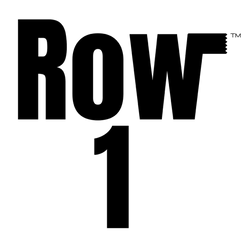There are some names in sports that we take for granted, and when we really think about them and ask just what the heck is that? Well, those are the ones I ask about too, and I now share my research with one that actually helps shed light on two major sports programs in the US.
Boston Bruins
How did the Boston Professional Hockey Club get their name and what exactly is a Bruin?A little story about a team origin
When Frank and Elizabeth had a young son in the fall of ‘76 they named him Charles. The family ran a local lumber company and really had to stretch a dollar to help their young family survive, especially in the brutal Vermont winters.
As Charles grew older he helped the families finances by not only helping out in the family business but by also taking employment as a gopher at the local corner grocery store as well. As Charles advanced into his later teen years he would be found competent in even buying logs for his father’s saw mill business, and did quite well at it too. Frank saw potential in the youngster and scraped together enough to send the lad to Jenney Business College in Enosburgh, Vermont.
Charles upon graduation moved to Cambridge, Massachusetts where he found employment at a grocer, a business he was somewhat familiar with from working at one earlier in his life, but it didn’t hurt that this Cambridge store was owned by his Uncle Oscar. He soon departed from there and made ends meet by becoming a traveling grocer and tobacco salesman. Meeting many people and expanding his network being out on the road he soon found himself with the opportunity to help run the New England Maple Syrup Company as the treasurer. This led to him moving to a better position with the Fitzgerald-Hubbard and Company financial and brokerage firm.
Still Charles had an itch to do more and better himself and he finally landed working in the John T. Connor Company which eventually morphed into the First national Store Finast Chain of grocers in the Boston area.
Living in the big city, Charles delighted in watching local hockey teams compete in his spare time. He started this love for the fast-paced skating game as a traveling salesman on trips to Montreal. He noticed that the amateur players in Boston were not as dedicated to the game as the Canadiens were up north of the border. Soon his observations were right as scandal swept amateur hockey in the city and fans in Beantown were becoming disenchanted with the game. Charles knew he had to do something so in 1924, using the wealth that he had acquired through hard work and smart saving, Charles Francis Adams purchased the very first franchise of the National Hockey League that would claim its home rink on American soil for the nifty sum of $15,000.
He decided to make the team’s home in Boston and be an extension of his already successful grocery chain of Brookside Stores. The colors that the team would wear must be in the same vein as his store's colors he decided to keep delivering the message to his fans to have allegiance both the hockey team and their grocer. This Brookside Grocery Store color scheme was brown and yellow. Charles wanted the team nickname and mascot to be relative to these colors too but to also be an animal of such respect and ferocity as well as have size, agility and cunning to match the perception he embodied upon himself and his retail chain.
Ideas poured in from all corners to match his request, but none quite hit the mark with Charles. One that his coach Art Ross had helped come up with was that of the Brownies, but Adams thought that perhaps it had too childish of a constitution for a professional sports team. He wanted something that bring fear from opponents, not their laughter. This indecision of a name remained with no clear-cut answer until Adam's secretary floated the idea by him, of the Bruins. Charles loved the name it was exactly what he was looking for.
What exactly is a bruin you may ask? I had the same question. According to Your Dictionary.com, a bruin is another name for a bear used in folklore in the medieval beast epic Reynard the Fox
And are not the UCLA sports teams the Bruins as well? Is there a connection?
UCLA teams were once called the Cubs, especially when the school and its athletic programs were just getting going. It was a little soft, so in 1924, according to the UCLA Alumni pages the student body adopted the more vigorous mascot in the Grizzly. In 1926, however, as UCLA looked to enter the Pacific Coast Conference, the University of Montana – already a member – pressed its case that they were the Grizzlie first, and there was only room for one Grizzly in the Conference. Once again, UCLA was in search of a new sporting moniker. After considering many different options they found another University of California school had a nickname issue but there was not one of lacking a name but one of having too many. At the time, UC Berkeley was using both the Bears and the Bruins names. It was confusing and faculty and students alike decided they needed but one identity. So Berkeley’s student leaders voted to give the Bruin name up and, UCLA was more than happy to have their bear-themed mascot returned with just a slightly unique name in the sporting leagues they played in.
Credits
The picture in the banner above is courtesy of Wikimedia Commons and is of a 1920 Grocery Store, or more factual the John Bowen grocery store at 809 Hamilton Street taken by an Anonymous Photographer



